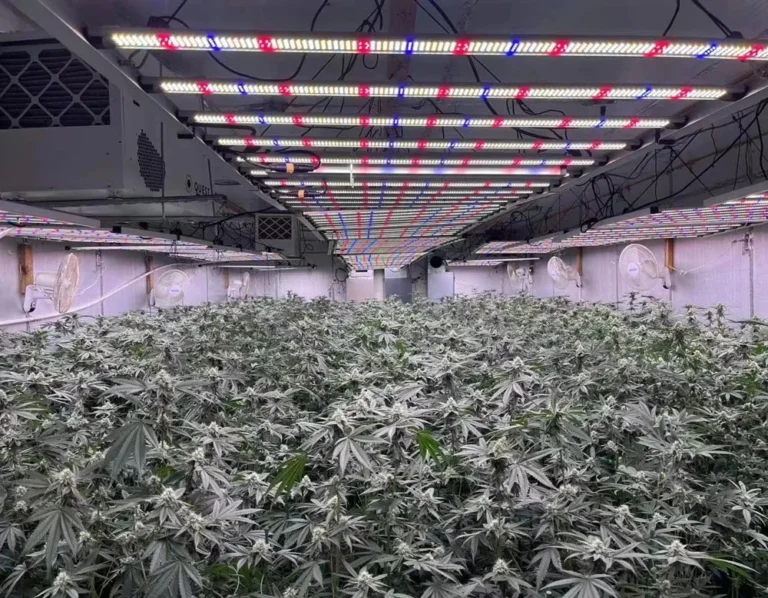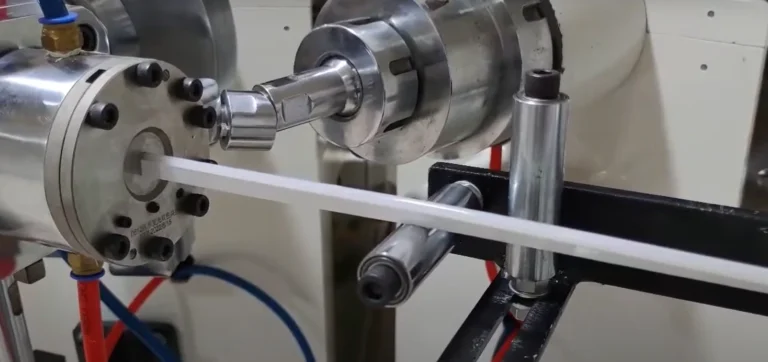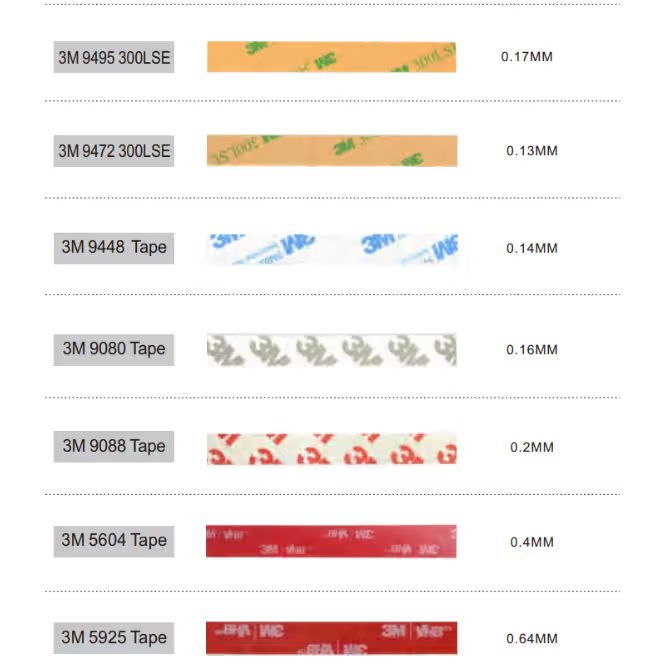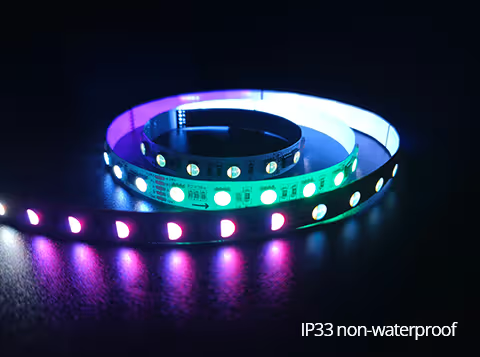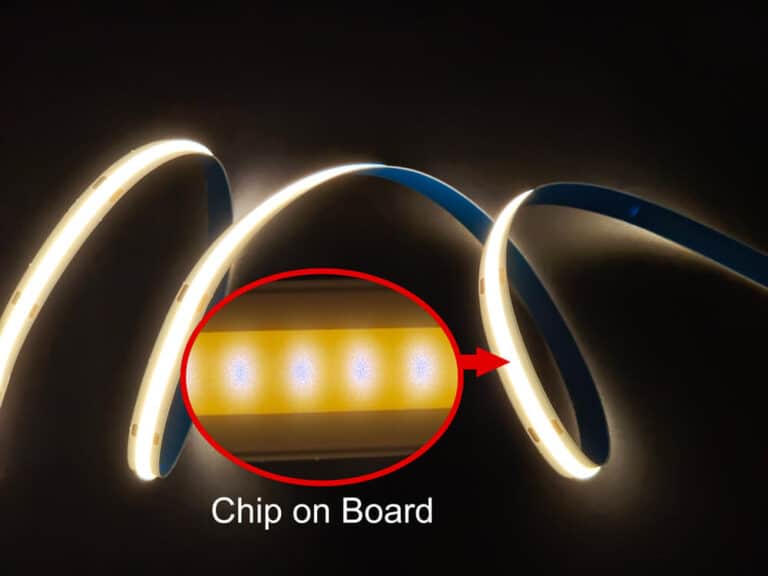Đèn Daisy Chain Grow Lights là giải pháp chiếu sáng hiệu quả cho việc canh tác trong nhà, cho phép kết nối nhiều đèn bằng một nguồn điện duy nhất. Thiết lập này đơn giản hóa việc cài đặt, giảm mức sử dụng ổ cắm và giữ cho các phòng phát triển được tổ chức. Cho dù bạn là người trồng thương mại hay quản lý một thiết lập lớn trong nhà, Daisy Chaining có thể tiết kiệm thời gian và năng lượng trong khi vẫn duy trì độ che phủ ánh sáng tối ưu. Trong bài viết này, chúng tôi sẽ giải thích về đèn phát triển của Daisy Chain là gì, cách chúng hoạt động và lý do tại sao chúng lý tưởng cho các hệ thống phát triển có thể mở rộng.
Chuỗi hoa cúc mọc ánh sáng là gì?
Đèn Grow Light của Daisy đề cập đến đèn LED Grow Light cho phép nhiều đơn vị được kết nối với nhau bằng cách sử dụng các cổng đầu vào và đầu ra nguồn. Thay vì cắm từng đèn vào một ổ cắm tường riêng biệt, người trồng có thể liên kết một số đèn nối tiếp
- giống như một chuỗi - sử dụng một ổ cắm điện duy nhất. Điều này đặc biệt hữu ích trong các phòng trồng trọt quy mô lớn, trang trại thẳng đứng hoặc trồng lều nơi cần nhiều đèn. Chức năng của chuỗi Daisy làm giảm sự lộn xộn của cáp, đơn giản hóa việc cài đặt và cho phép một môi trường phát triển sạch sẽ hơn, có tổ chức hơn. Hầu hết các đèn phát triển chuỗi Daisy đều đi kèm với ổ cắm hoặc cổng nguồn tích hợp hỗ trợ mở rộng dễ dàng, tùy thuộc vào giới hạn công suất và an toàn điện.
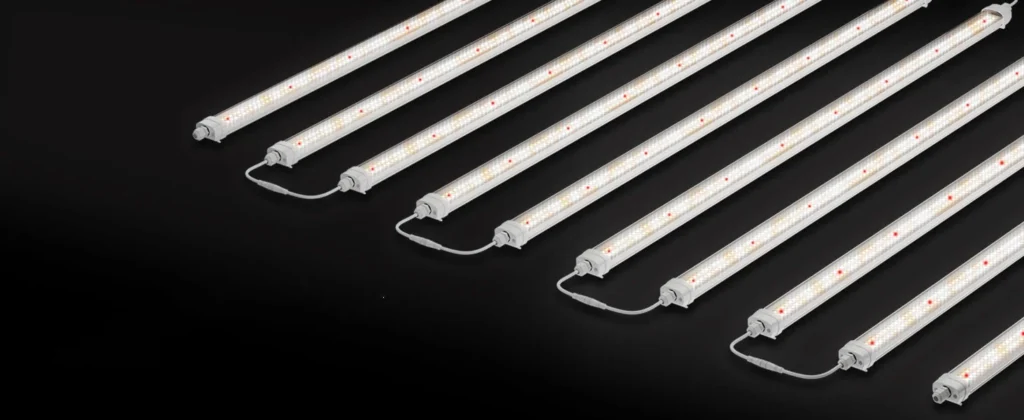
Tại sao chức năng chuỗi daisy lại quan trọng trong canh tác trong nhà
Trong canh tác trong nhà và trồng trọt thương mại, hiệu quả và khả năng mở rộng là chìa khóa. Đèn phát triển chuỗi Daisy giúp sắp xếp các thiết lập ánh sáng lớn bằng cách giảm thiểu số lượng ổ cắm trên tường và dải điện cần thiết. Điều này không chỉ làm giảm thời gian lắp đặt mà còn giảm nguy cơ bị quá tải điện hoặc dây bị rối. Đối với người trồng quản lý giá đỡ hoặc kệ đa cấp, Daisy Chaining cho phép phân phối ánh sáng đồng đều giữa các nhà máy trong khi vẫn giữ cho hệ thống điện đơn giản và tập trung. Nó đặc biệt có lợi trong hệ thống canh tác theo chiều dọc, thiết lập nhân bản và nhân giống cây giống, nơi ánh sáng nhất quán và hệ thống dây điện gọn gàng là rất quan trọng. Nói tóm lại, tính năng chuỗi daisy cải thiện cả quy trình làm việc và tăng độ an toàn trong phòng.
Bạn có thể trồng bao nhiêu đèn phát triển chuỗi với nhau?
Số lượng đèn phát triển có thể được chuỗi daisy phụ thuộc vào hai yếu tố chính: phương pháp đấu dây và định mức công suất của mỗi đèn.
Nguồn điện cá nhân trên mỗi ánh sáng (kết nối song song & đầu vào AC):
Khi mỗi đèn phát triển có nguồn điện tích hợp riêng (thường là AC cao áp), nó có thể hỗ trợ nhiều kết nối hơn. Đèn có công suất thấp hơn hút dòng điện ít hơn, giúp thiết lập an toàn hơn và có khả năng mở rộng hơn. Ví dụ, đèn phát triển 18W T8 với trình điều khiển tích hợp thường có thể được chuỗi bằng chuỗi 50 hoặc nhiều hơn mà không có vấn đề gì.
Thiết lập nguồn điện chung (kết nối song song hoặc nối tiếp & đầu vào DC):
Nếu nhiều đèn phát triển chia sẻ một nguồn điện bên ngoài duy nhất, tổng công suất của đèn không được vượt quá đầu ra định mức của trình điều khiển. Ví dụ, một trình điều khiển 400W có thể hỗ trợ tám đèn phát triển 50W hoặc bốn đơn vị 100W. Trong trường hợp này, số lượng đèn bạn có thể xích được giới hạn trực tiếp bởi công suất của trình điều khiển.
Tuân theo các thông số kỹ thuật và tiêu chuẩn an toàn:
Luôn kiểm tra bảng dữ liệu sản phẩm hoặc tham khảo ý kiến của nhà sản xuất trước khi lắp đặt. Chú ý đến các chứng nhận như UL hoặc CE và đảm bảo hệ thống không gây ra rủi ro quá nóng, ngắt hoặc nguy cơ hỏa hoạn. Một thiết lập chuỗi daisy được thiết kế tốt giúp cân bằng hiệu suất với an toàn điện.
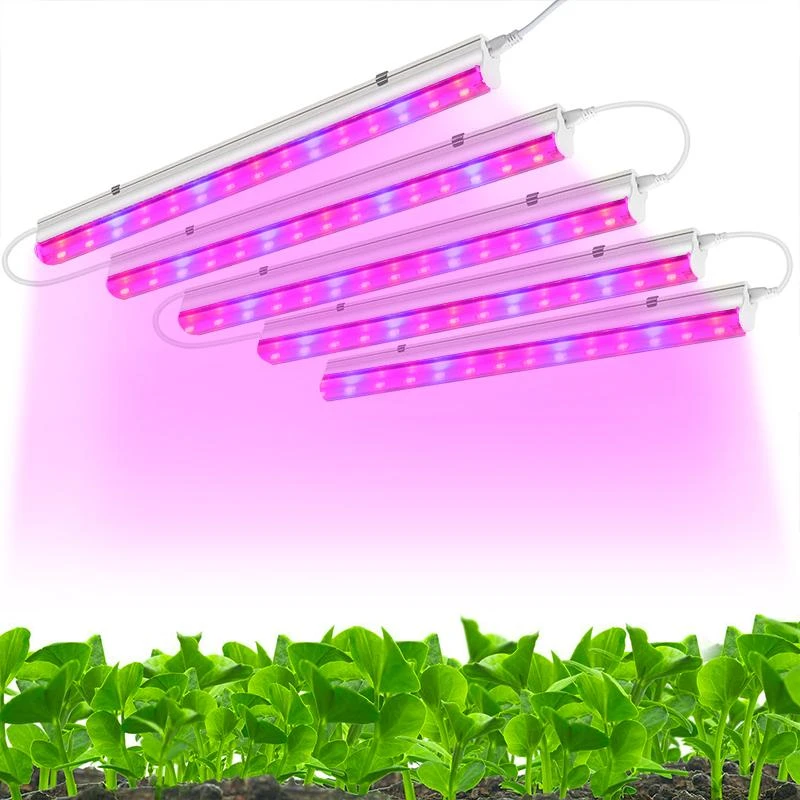
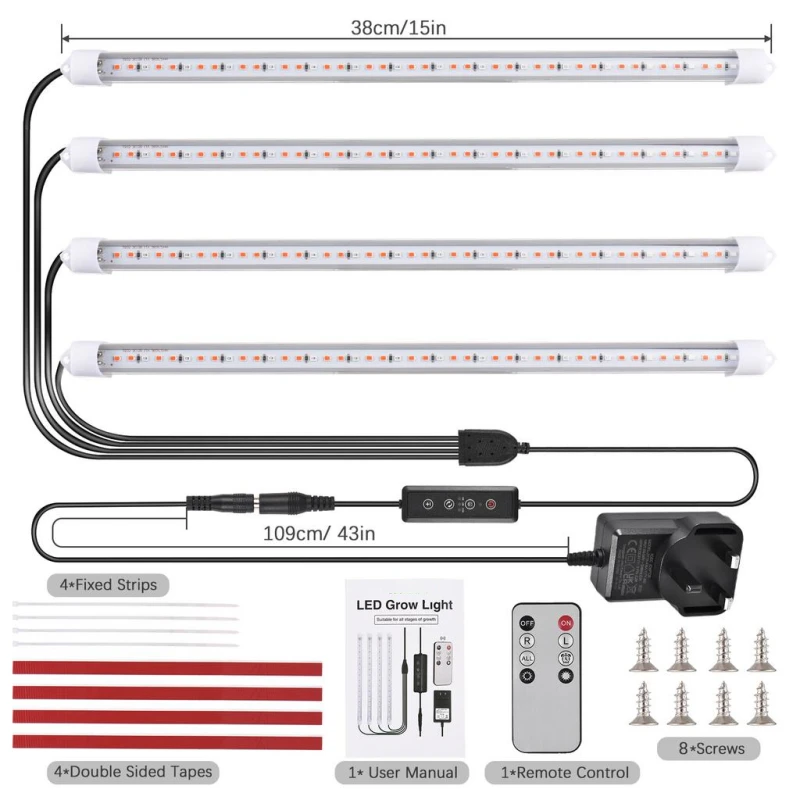
Daisy Chain so với Thiết lập truyền thống: Cái nào tốt hơn?
Khi thiết lập đèn phát triển, bạn thường có hai tùy chọn: thiết lập chuỗi daisy hoặc hệ thống plug-in riêng lẻ truyền thống.
Thiết lập chuỗi Daisy cho phép nhiều đèn được liên kết với nhau bằng một nguồn điện, giúp giảm đáng kể số lượng ổ cắm trên tường cần thiết. Phương pháp này là lý tưởng cho người trồng thương mại hoặc trang trại thẳng đứng, nơi nhiều ánh sáng cần hoạt động đồng thời trong không gian chật hẹp. Nó đơn giản hóa việc quản lý cáp, rút ngắn thời gian lắp đặt, giữ cho không gian phát triển sạch sẽ và hiệu quả.
Mặt khác, thiết lập truyền thống yêu cầu mỗi đèn phát triển phải được cắm vào ổ cắm hoặc thanh nguồn của chính nó. Mặc dù điều này có thể được chấp nhận đối với những người trồng sở thích quy mô nhỏ hoặc hệ thống ánh sáng đơn lẻ, nhưng nó nhanh chóng trở nên kém hiệu quả và lộn xộn trong các hoạt động lớn hơn. Quản lý hàng chục dây nguồn riêng biệt làm tăng khả năng quá tải, rối và nhầm lẫn.
Kết luận:
Đối với những người trồng chuyên nghiệp và trồng trọt trong nhà quy mô lớn, thiết lập chuỗi Daisy rõ ràng là sự lựa chọn tốt hơn. Nó cung cấp hệ thống dây điện sạch hơn, mở rộng dễ dàng hơn và cải thiện độ an toàn khi lắp đặt đúng cách.

Cần lưu ý những điều cần lưu ý khi mua đèn LED dây chuyền phát triển
Khi chọn đèn LED phát triển chuỗi daisy để sử dụng chuyên nghiệp hoặc thương mại, điều cần thiết là phải vượt ra ngoài các thông số kỹ thuật ở cấp độ bề mặt. Một quyết định mua hàng được thông tin tốt đòi hỏi sự hiểu biết thấu đáo về an toàn điện, ổn định hiệu suất lâu dài, khả năng tương thích với hệ thống phát triển và tuân thủ quy định. Dưới đây là những yếu tố quan trọng để đánh giá:
1. Tải điện và khớp nối điện
Một trong những rủi ro bị bỏ qua nhiều nhất trong chuỗi daisy là vượt quá tải điện an toàn cho một mạch hoặc một vật cố định. Mỗi ánh sáng tăng thêm vào dòng tích lũy được rút ra từ nguồn điện ban đầu. Ví dụ: liên kết mười đèn 50W dẫn đến tổng tải 500W — nếu đường dây điện hoặc mạch bên trong của bạn không được đánh giá cho điều đó, quá nóng hoặc vấp trở thành một mối nguy hiểm thực sự.
Các cân nhắc chính:
Xác định dòng điện đầu vào (amp) của mỗi vật cố định ở điện áp cục bộ của bạn (ví dụ: 120V / 230V).
Kiểm tra mức tối đa hiện tại của ổ cắm AC, cổng chuỗi daisy hoặc trình điều khiển bên ngoài.
Xem xét khởi động khởi động hiện tại, có thể vượt quá dòng điện hoạt động được xếp hạng trong giây lát.
2. Kiến trúc trình điều khiển: bên trong vs bên ngoài
Có hai cấu hình chính:
Đèn điều khiển tích hợp (ví dụ: đèn phát triển T8): Mỗi đơn vị được cấp nguồn độc lập bằng đầu vào AC, giúp chúng có thể mở rộng và cho phép nhiều thiết bị hơn được xâu chuỗi — đôi khi 40–50 đèn tùy thuộc vào công suất và công suất đường truyền.
Hệ thống chia sẻ trình điều khiển: Nhiều thiết bị hỗ trợ DC kết nối với một trình điều khiển tập trung. Trong trường hợp này, số lượng đèn bị giới hạn bởi công suất và công suất dòng điện của người lái xe. Ví dụ, một trình điều khiển 400W có thể cung cấp năng lượng cho các thanh 8 x 50W, nhưng chỉ có 4 mô-đun 4 x 100W.
Người mua nâng cao nên hỏi:
Trình điều khiển là dòng điện không đổi hay điện áp không đổi?
Dung sai mất đường dây khi nhiều thiết bị được kết nối qua cáp dài?
Điện áp rơi qua các kết nối có nằm trong phạm vi chấp nhận được không?
3. Hệ thống đầu nối và an toàn hệ thống dây điện
Không phải tất cả các đầu nối chuỗi daisy đều được làm bằng nhau. Một cổng được thiết kế kém có thể trở thành nút thắt cho nhiệt, hoặc bị lỏng theo thời gian do rung động hoặc giãn nở nhiệt. Đối với mục đích sử dụng thương mại, ưu tiên:
Đầu nối khóa an toàn (ví dụ: khóa xoắn, phích cắm chống thấm) trên thùng tiêu chuẩn hoặc cổng Hình 8
Cách nhiệt chống nóng, đặc biệt là khi đèn được sử dụng trong môi trường nhà kính nhiệt độ cao
Kích thước cáp đo phù hợp với dòng điện toàn bộ (ví dụ: 18AWG so với 14AWG)
Bạn cũng có thể muốn cáp nguồn có thể tháo rời và cố định cho mô-đun.
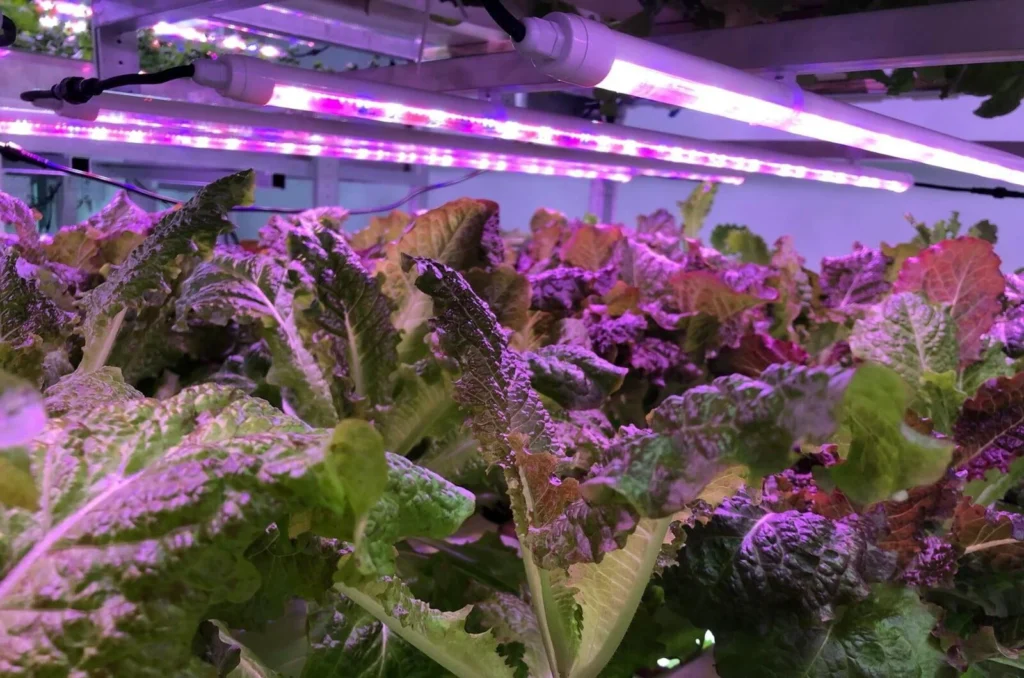
4. Quản lý nhiệt theo quy mô
Hệ thống chuỗi daisy tạo ra nhiệt tích lũy. Mặc dù một vật cố định duy nhất có thể ở trong nhiệt độ hoạt động an toàn, nhiều đèn được kết nối nối tiếp có thể làm tăng nhiệt độ môi trường đáng kể, đặc biệt là trong các phòng trồng trọt hạn chế.
Kiểm tra những gì:
Vỏ có được thiết kế với các tản nhiệt thụ động hiệu quả (ví dụ: vây nhôm đùn) không?
Cảm biến nhiệt độ hoặc cơ chế tắt máy quá nhiệt có được tích hợp sẵn không?
Bố cục có thể cho phép đủ luồng không khí trên tất cả các đơn vị được kết nối không?
Lập kế hoạch nhiệt kém làm giảm tuổi thọ LED và làm suy giảm tính nhất quán của quang phổ.
5. Chứng nhận an toàn và phòng cháy chữa cháy
Trong các cơ sở lắp đặt lớn, việc đáp ứng các tiêu chuẩn an toàn của địa phương và quốc tế không phải là tùy chọn - đó là điều bắt buộc. Luôn kiểm tra:
UL / ETL (Bắc Mỹ): An toàn điện và cháy
CE / RoHS (Châu Âu): Tuân thủ EMC và các hạn chế về vật liệu nguy hiểm
Xếp hạng IP: Đối với môi trường dễ bị ẩm hoặc bụi
Ngoài ra, đảm bảo cáp nguồn, đầu nối và trình điều khiển đáp ứng các tiêu chuẩn an toàn tương tự — không chỉ bản thân dải đèn LED.
6. Khả năng mở rộng và tích hợp thông minh
Người mua có tư duy tiến bộ nên lập kế hoạch cho khả năng mở rộng hệ thống và tự động hóa. Hỏi những câu hỏi này:
Hệ thống có thể hỗ trợ các giao thức làm mờ (ví dụ: 0–10V, PWM hoặc DALI) không?
Cổng chuỗi daisy có khả năng dữ liệu (để điều chỉnh thời gian hoặc phổ) không?
Bộ điều khiển của bên thứ ba hoặc hệ thống nông nghiệp thông minh có tương thích không?
Hệ thống có cung cấp thiết kế không an toàn, trong đó một thiết bị bị lỗi không làm gián đoạn phần còn lại?
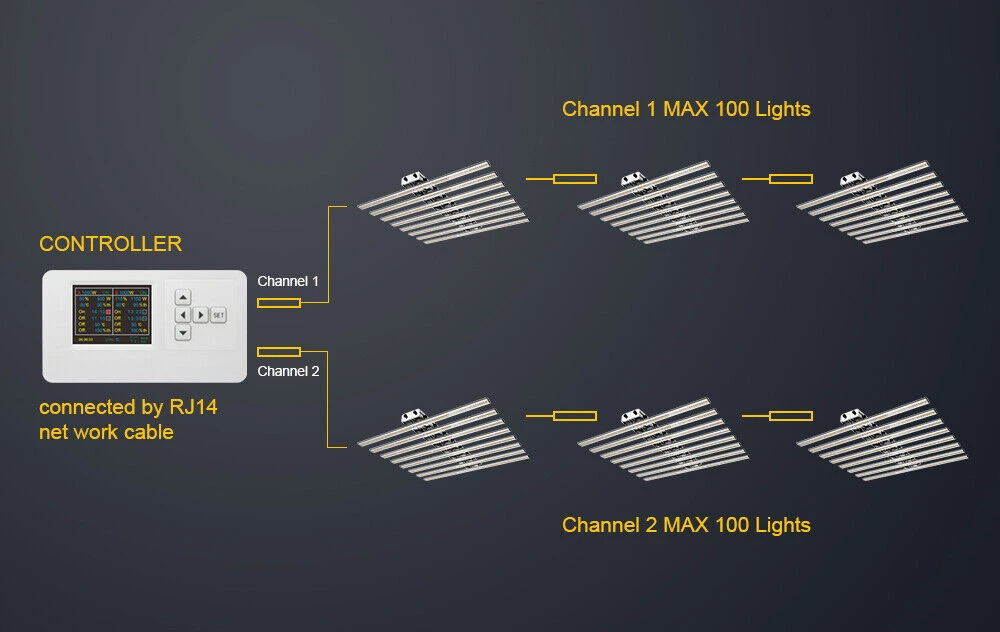
Cách cài đặt đèn phát triển chuỗi Daisy: Hướng dẫn từng bước để thiết lập an toàn và hiệu quả
Việc lắp đặt đèn phát triển dây chuyền đúng cách là rất quan trọng - không chỉ để phân phối ánh sáng tối ưu mà còn đảm bảo an toàn điện và độ tin cậy lâu dài. Dưới đây là hướng dẫn từng bước được thiết kế cho những người trồng thương mại, quản lý cơ sở hoặc nhà tích hợp ánh sáng đang thiết lập nhiều đèn trong môi trường chuyên nghiệp.
Bước 1: Đánh giá cơ sở hạ tầng điện năng của bạn
Trước khi bất kỳ phần cứng nào được kết nối, hãy đánh giá bố trí điện của cơ sở của bạn:
Xác định giới hạn điện áp và dòng điện của mạch của bạn (thường là 120V hoặc 240V).
Sử dụng bộ ngắt mạch chuyên dụng cho đèn phát triển bất cứ khi nào có thể.
Xác nhận tổng tải: Thêm công suất của tất cả các đèn cần kết nối và đảm bảo nó nằm trong phạm vi 80% so với công suất định mức của mạch của bạn (mã điện quốc gia khuyến nghị không vượt quá 80%).
Ví dụ: Đối với mạch 15A, 120V (tối đa 1800W), nhắm vào tổng tải không quá 1440W.
Bước 2: Tìm hiểu sơ đồ kết nối
Có hai cấu trúc liên kết chuỗi daisy chính:
Dây chuyền AC (điện áp cao):
Mỗi vật cố định chứa trình điều khiển bên trong riêng của nó và cắm vào cổng AC tiếp theo thông qua các cổng AC tích hợp. Thích hợp cho ống T-Series, đèn bar, hoặc đèn bảng điều khiển tích hợp.
Chuỗi DC Daisy (dựa trên trình điều khiển):
Nhiều thiết bị DC được cung cấp bởi một trình điều khiển trung tâm. Tất cả các đơn vị phải phù hợp với thông số điện áp và dòng điện. Hệ thống dây điện thường được thực hiện song song, không phải là chuỗi đúng.
Luôn tham khảo sơ đồ kết nối của nhà sản xuất. Không bao giờ giả định khả năng tương thích giữa các thương hiệu hoặc giữa các dòng sản phẩm.
Bước 3: Kết nối đèn theo trình tự thích hợp
Tắt nguồn chính trước khi thực hiện bất kỳ kết nối nào.
Bắt đầu với thiết bị đầu tiên gần nguồn điện nhất.
Sử dụng cáp jumper do nhà sản xuất cung cấp hoặc dây kết nối. Tránh cáp của bên thứ ba trừ khi được xác minh về khả năng chịu nhiệt và khả năng chịu nhiệt.
Kết nối cổng đầu ra của vật cố định đầu tiên với cổng đầu vào của cổng tiếp theo, tiếp tục theo trình tự
Bảo vệ tất cả các đầu nối một cách chắc chắn. Nếu sử dụng các đầu nối khóa, hãy đảm bảo chúng “nhấp vào” hoặc niêm phong hoàn toàn để tránh gián đoạn hồ quang hoặc tín hiệu.
Mẹo: Không vòng dây xích trở lại nguồn điện — chuỗi hoa cúc phải tuyến tính, không phải hình tròn.
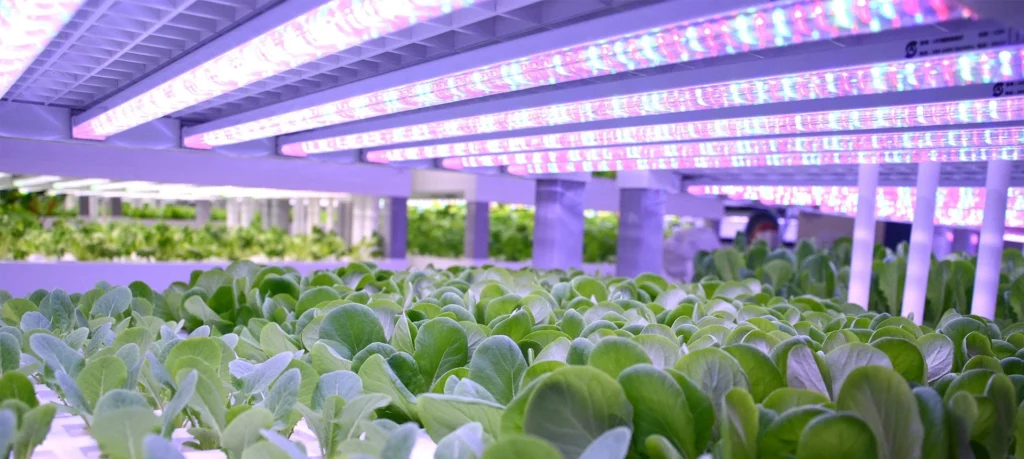
Bước 4: Quản lý cáp và khoảng cách
Gắn đèn theo yêu cầu PPFD của cây trồng của bạn và kế hoạch khoảng cách. Thông thường, cách nhau 12 ″ –24 ″ cho cây con, hoặc 18 ″ –36 ″ cho cây trồng có hoa.
Tổ chức dây bằng kẹp hoặc trung kế để tránh các mối nguy hiểm do nhiệt và vấp ngã.
Duy trì khoảng cách tối thiểu giữa các thiết bị để đảm bảo luồng không khí và ngăn chặn các điểm nóng.
Bước 5: Kiểm tra hệ thống tăng dần
Sau khi kết nối, hãy bật hệ thống theo từng giai đoạn, đặc biệt nếu nó bao gồm hàng chục đồ đạc.
kiểm tra cho:
ánh sáng không đồng đều hoặc nhấp nháy
Nhiệt lượng dư thừa tại các điểm kết nối
Máy cắt bị vấp hoặc âm thanh vo ve (dấu hiệu của quá tải)
Sử dụng nhiệt kế hồng ngoại hoặc máy ảnh nhiệt để cài đặt lớn để kiểm tra các điểm nóng tiềm năng.
Bước 6: Triển khai kiểm soát và dự phòng
Thêm bộ hẹn giờ hoặc bộ điều khiển thông minh để tự động hóa chu kỳ ánh sáng và giảm lỗi của con người.
Đối với các cơ sở thương mại, tích hợp với HVAC hoặc hệ thống tự động hóa tòa nhà để đồng bộ hóa nhiệt độ, độ ẩm và ánh sáng.
Xem xét trình điều khiển dự phòng hoặc giới hạn khẩn cấp để cài đặt giá trị cao để giảm rủi ro thời gian chết.
Bước 7: Ghi lại bố cục
Để kiểm tra bảo trì và an toàn trong tương lai:
Ghi tổng công suất trên mỗi chuỗi, số lượng đèn và các nhiệm vụ của cầu dao.
Dán nhãn rõ ràng từng nhóm chuỗi cúc.
Chụp ảnh hoặc tạo sơ đồ cài đặt, đặc biệt là đối với các thiết lập quy mô lớn.

Ứng dụng và Trường hợp dự án: Cách đèn Daisy Chain Grow Lights mang lại giá trị thực tế
Hệ thống ánh sáng của chuỗi Daisy được áp dụng rộng rãi trong nhiều ứng dụng canh tác trong nhà, nơi hệ thống dây điện hiệu quả, ánh sáng đồng đều và điều khiển có thể mở rộng là điều cần thiết. Dưới đây là hai trường hợp sử dụng phổ biến, tiếp theo là một dự án thực tế do Signlite chuyển giao cho một khách hàng Hoa Kỳ bằng cách sử dụng canh tác trên tháp trên không.
1. Giá đỡ nông nghiệp theo chiều dọc với cây trồng nhiều lớp
Trong các thiết lập canh tác theo chiều dọc, đặc biệt là những cây trồng bằng phương pháp thủy canh hoặc khí canh, cây trồng được xếp chồng lên nhau trên nhiều lớp. Mỗi lớp yêu cầu độ che phủ ánh sáng đồng đều và không gian cho hệ thống dây điện bị hạn chế. Đèn Daisy Chain Grow Lights cho phép người trồng kết nối hàng chục đèn với hệ thống cáp tối thiểu và chỉ một vài trình điều khiển, hợp lý hóa cả lắp đặt và bảo trì.
Người trồng thường sử dụng bộ điều khiển kỹ thuật số 0–10V để điều chỉnh cường độ ánh sáng trên tất cả các lớp — lý tưởng để tối ưu hóa phản ứng quang hợp ở các giai đoạn sinh trưởng khác nhau của cây. Trong các cài đặt như vậy, daisy chaining không chỉ giảm chi phí phần cứng mà còn cải thiện hiệu quả năng lượng và tính nhất quán nhẹ.
2. Hệ thống lều trồng mô-đun để nghiên cứu hoặc sản xuất cây giống
Trong nhà kính R&D, phòng thí nghiệm nuôi cấy mô và vườn ươm cây con quy mô nhỏ, lều trồng mô-đun được sử dụng để tạo ra môi trường có kiểm soát. Những điều này thường yêu cầu bố trí ánh sáng linh hoạt, đặc biệt là khi chuyển đổi giữa các giống cây trồng hoặc quang kỳ.
Chức năng của chuỗi Daisy cho phép các nhà nghiên cứu cấu hình lại đèn mà không cần thay đổi nguồn điện, trong khi các tính năng có thể làm mờ giúp mô phỏng các điều kiện theo mùa khác nhau. Điều này làm cho hệ thống chuỗi daisy lý tưởng cho các thí nghiệm hoặc hoạt động đòi hỏi tính linh hoạt cao, độ tin cậy và bảo trì thấp.
Trường hợp dự án: Trồng rau diếp trên không với Signlite’Hệ thống chiếu sáng dây chuyền S T8
Một trong những khách hàng gần đây của chúng tôi ở Hoa Kỳ chuyên trồng rau diếp bằng cách sử dụng tháp khí canh. Thách thức của họ là gắn đèn phát triển theo bốn hướng xung quanh mỗi tòa tháp, với các yêu cầu về hiệu suất và ngân sách nghiêm ngặt:
PPE mục tiêu: ≥ 2,8 μmol / J
PPFD: ≥ 250 μmol / m² / s ở khoảng cách 30 cm
Chức năng làm mờ: yêu cầu
Ngân sách cho mỗi lần cố định: dưới 7 USD
Sau khi đánh giá nhiều nhà cung cấp, khách hàng đã chọn Signlite do khả năng đáp ứng cả hiệu suất kỹ thuật và hạn chế ngân sách của chúng tôi. Giải pháp đề xuất của chúng tôi:
Thiết lập ánh sáng: Đèn LED 8 x 1.2 mét T8
Hệ thống điện: Tất cả 8 đèn được cung cấp bởi trình điều khiển bên ngoài 300W được chia sẻ
Hộp điều khiển: Tích hợp cả bộ điều chỉnh độ sáng và cổng RJ12
Bộ điều chỉnh độ sáng núm cho phép làm mờ thủ công độc lập của toàn bộ nhóm ánh sáng.
Cổng RJ14 cung cấp khả năng tương thích với các bộ điều khiển chính bên ngoài, cho phép làm mờ thống nhất thông qua hệ thống canh tác thông minh.
Thiết kế này cho phép khách hàng:
đạt được mức PPFD và PPE mục tiêu, đảm bảo tăng trưởng rau diếp tối ưu;
Duy trì bố trí hệ thống dây điện mô-đun sạch sẽ cho thiết kế tháp 4 hướng;
Giữ chi phí cho mỗi lần cố định dưới 7 USD, duy trì tốt trong ngân sách.
Khách hàng rất hài lòng với kết quả, đặc biệt là sự cân bằng giữa hiệu suất quang sinh học và hiệu quả điện. Hệ thống đã được triển khai thành công và hiện đang hoạt động liên tục với sức khỏe nhà máy và ổn định điện năng tuyệt vời.
mua đèn dây chuyền trồng hoa cúc với số lượng lớn ở đâu
Nếu bạn đang tìm kiếm một nhà sản xuất đáng tin cậy của đèn LED phát triển chuỗi daisy cho nông nghiệp thẳng đứng, trồng nhà kính hoặc hệ thống khí canh, Signlite là đối tác đáng tin cậy của bạn.
Với hơn 15 năm kinh nghiệm trong sản xuất đèn LED, Signlite chuyên về các giải pháp chiếu sáng trồng trọt tùy chỉnh cho các dự án quy mô thương mại và công nghiệp. Chúng tôi cung cấp một loạt các Đèn LED trồng cây—Bao gồm có thể gập lại công suất cao, dây chuyền T8 và thiết bị tuyến tính — được thiết kế để đáp ứng các yêu cầu hiệu suất nghiêm ngặt như PPE cao, PPFD, độ mờ, hiệu quả năng lượng và phổ cụ thể.
Tất cả các sản phẩm của chúng tôi được thiết kế và lắp ráp trong nhà, đảm bảo kiểm soát chất lượng nhất quán và thời gian dẫn nhanh. Từ tùy biến OEM đến thiết kế hệ thống chiếu sáng hoàn chỉnh với trình điều khiển, hộp điều khiển và khả năng tương thích chuỗi daisy, chúng tôi hỗ trợ khách hàng toàn cầu ở Hoa Kỳ, Châu Âu, Đông Nam Á và hơn thế nữa.
Sẵn sàng để tối ưu hóa hệ thống đèn phát triển của bạn?
Hãy liên hệ với nhóm Signlite ngay hôm nay để thảo luận về nhu cầu phát triển Light Chain Daisy của bạn hoặc yêu cầu báo giá miễn phí cho dự án tiếp theo của bạn.
